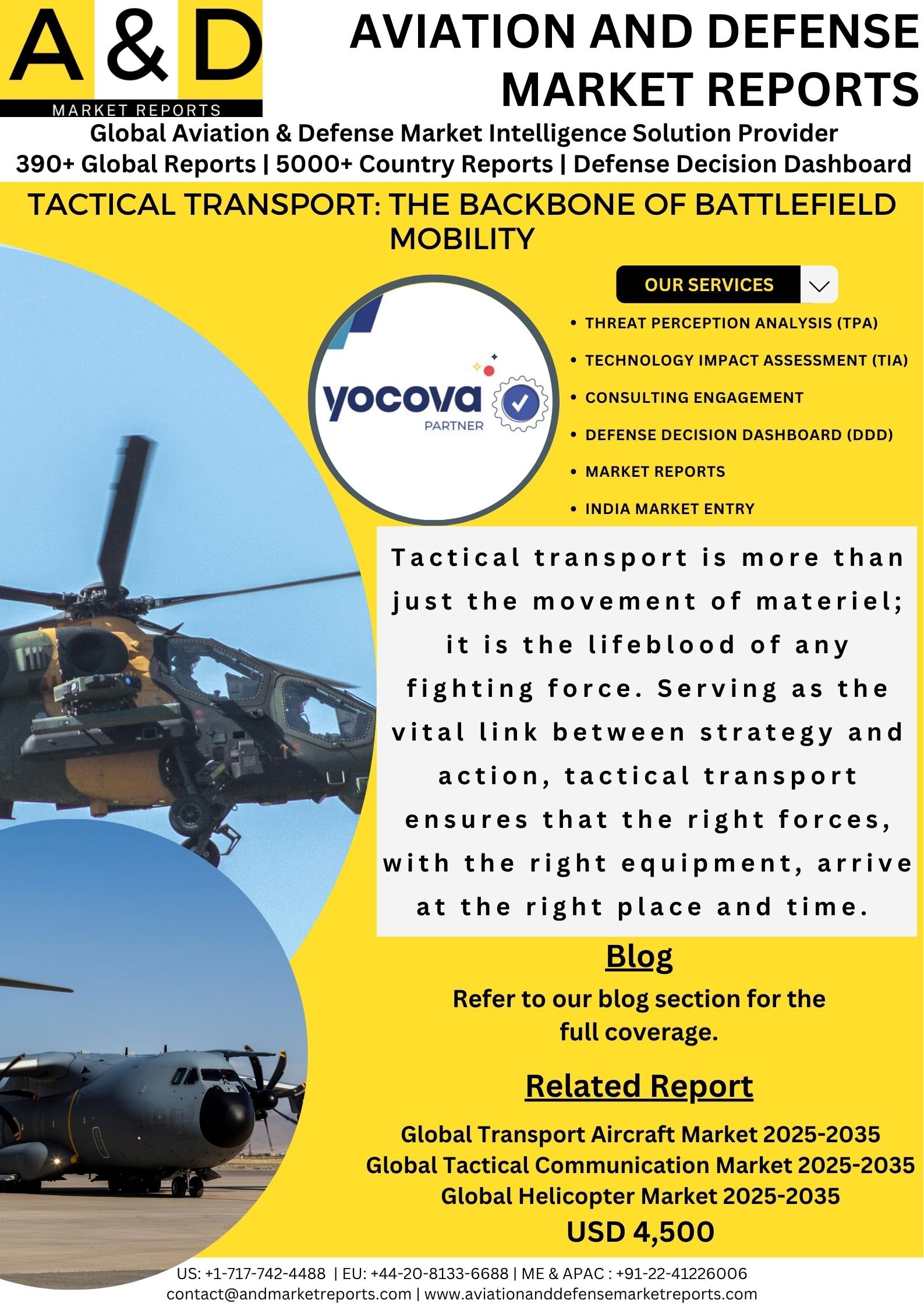Tactical transport is a cornerstone of military logistics, enabling armed forces to deliver troops, equipment, and supplies precisely where and when they are needed within a theater of operations. Whether on rugged terrain, dense jungles, mountainous borders, or urban landscapes, the speed and efficiency of tactical transport can determine the success or failure of military operations.
Tactical transport refers to the movement of personnel, equipment, and supplies over short to medium distances—often directly into or around the battlezone. Its primary goal is to sustain frontline forces, respond rapidly to changing battlefield conditions, and ensure that the operational tempo of military operations is maintained without interruption. Tactical transport is distinct from strategic transport, which moves resources over much longer distances, often between continents or remote bases.
Platforms of Tactical Transport
1. Fixed-Wing Aircraft:
These are typically turboprop planes designed for short takeoff and landing, enabling them to operate from small or unprepared airstrips. Notable examples include the Lockheed C-130J Super Hercules, Transall C-160, and CASA CN-235. They excel at quickly moving medium-to-large payloads right to the heart of the action, whether through direct landing or airdrop delivery.
2. Rotary-Wing Aircraft (Helicopters):
Helicopters such as the CH-47 Chinook, Sikorsky S-70, and Mil Mi-8 are essential for tactical transport, especially where runways are unavailable. They can land in confined spaces—or hover to deploy troops and cargo by rope—making them invaluable for rapid insertion, extraction, or resupply in challenging environments.
3. Tactical Wheeled and Tracked Vehicles:
From light all-terrain vehicles (like the Oshkosh JLTV and Supacat) to heavy tactical trucks (such as the HEMTT or HET), ground transport covers everything from special operations insertions to mass troop movements and logistical resupply. These vehicles are rugged, capable of traversing difficult landscapes, and often armored to protect against threats.
The Role of Tactical Transport in Military Operations
1. Rapid Force Projection:
Tactical transport enables commanders to move forces swiftly within a theater, reinforcing sectors under threat, exploiting breakthroughs, or carrying out flanking maneuvers.
2. Logistical Sustainment:
Continuous resupply is vital—ammunition, fuel, food, medical supplies, and reinforcements all flow to frontline units via tactical transport assets, underpinning combat effectiveness.
3. Casualty Evacuation:
Helicopters and tactical vehicles are used for the prompt extraction and medical evacuation of wounded personnel from the battlefield, saving lives and maintaining morale.
4. Humanitarian and Disaster Relief:
The agility and access of tactical transport make it central to disaster relief efforts, getting aid and rescue teams into disaster-struck or war-torn areas that are inaccessible by road.
Key Features of Modern Tactical Transport
- Short Takeoff and Landing Capabilities: To operate close to the fight, aircraft are engineered for minimal runway requirements.
- Armored Protection and Defensive Systems: Vehicles and aircraft are equipped with countermeasures and armor to withstand ambushes, mines, and surface-to-air missiles.
- Mobility and Adaptability: Ground vehicles boast advanced suspension systems and all-wheel drive for off-road performance; aircraft and helicopters are designed for quick configure and refueling.
- Versatility: Tactical transport platforms are modular, often able to switch roles—from troop carrier, medevac, and supply delivery to mobile command centers—quickly and efficiently.
- Technological Integration: Modern platforms feature GPS navigation, real-time communications, and mission-adaptive cargo setups, making them more responsive to battlefield needs.
Historical and Contemporary Examples
- World War II Operations: Airborne tactical transport was vital in the Normandy landings, the siege of Stalingrad, and various operations in the Pacific, significantly shaping outcomes through superior logistics.
- Indian Armed Forces: Record-setting high-altitude air drops in the Himalayas, such as Dakota landings at Leh, have underlined the strategic advantage gained by effective tactical transport in challenging environments.
- Recent Conflicts: The use of C-130Js in Afghanistan and Iraq has demonstrated the flexibility of tactical transport in supporting both combat and humanitarian missions, often under fire or in austere conditions.
Tactical Transport Planning and Challenges
Effective tactical transport hinges on detailed planning and adaptability. Planners must anticipate operational tempo, terrain, threat environment, and logistic demands.
Scenarios and their impact on transport:
- Fast-Moving Offensives: Require extensive fuel and convoy protection.
- Slow Advances/Defensive Ops: Demand high ammunition throughput and flexible supply lines.
- High-Threat Environments: Necessitate robust counter-IED and counter-ambush measures and route flexibility.
Emerging technologies, such as autonomous vehicles, electrification, and digital command systems, are rapidly transforming the tactical transport landscape, offering new avenues for efficiency and survivability.
The Future of Tactical Transport
The shift towards more agile, multi-domain operations means tactical transport platforms must continue evolving. Modular vehicles, unmanned drones, digital logistics networks, and even AI-driven transport convoys are on the horizon. Ultimately, the ability to move swiftly and securely—across every type of terrain and threat—will remain the decisive factor in modern warfare.
Conclusion
Tactical transport is more than just the movement of materiel; it is the lifeblood of any fighting force. Serving as the vital link between strategy and action, tactical transport ensures that the right forces, with the right equipment, arrive at the right place and time. It remains, and will continue to be, a decisive enabler in military, humanitarian, and disaster response operations across the globe.
